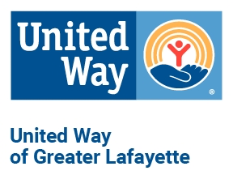HISTORY
In 1887, a Denver woman, a priest, two ministers and a rabbi recognized the need for cooperative action to address their city’s welfare problems. Frances Wisebart Jacobs, Rev. Myron W. Reed, Msgr. William J.O’Ryan, Dean H. Martyn Hart and Rabbi William S. Friedman put their heads together to plan the first united campaign for ten health and welfare agencies. They created an organization to serve as an agent to collect funds for local charities, as well as to coordinate relief services, counsel and refer clients to cooperating agencies, and make emergency assistance grants in cases which could not be referred. That year, Denver raised $21,700 and created a movement that would spread throughout the country to become the United Way. Over 118 years later, United Way is still focused on mobilizing the caring power of communities and making a difference in people’s lives.
Locally, United Way has been serving Tippecanoe County since 1923 when a group of caring residents banded together to raise $23,000 to fund nine local agencies. Over the years, our name has changed, we’ve become a funder for new partners, and we’ve shifted our business focus from a fundraising organization to a community change agent. We are firmly rooted in this community, and we are invested in making Greater Lafayette a better place for all of our neighbors to call home.
1923
The first community campaign raised $23,000 to fund nine agencies.
1936
The Federation of Agencies was established to solicit community support, and a city-wide effort raised $30,490 during a seven week campaign.
1940's
The Community Chest organization was established with its infamous Red Feather logo that became a national symbol, which many people still remember today. Business leaders across the country viewed the Community Chest as an efficient and effective way to distribute funds to organizations that needed support. The Community Chest also helped businesses demonstrate their interest in sustaining their communities. In 1946, fourteen agencies including the YMCA, YWCA, Boy Scouts, Girl Scouts, The Salvation Army, Flower Mission, Lincoln Community Center, the South End Community Center and the USO were served by the Community Chest organization in Lafayette, Indiana. Many of these agencies are still part of United Way’s work today. Other organizations changed with the community, and new organizations like Food Finders Food Bank, Right Steps Child Development Centers and Community Health Clinic were created to address specialized needs.
1960's
The United Fund and the Council for Community Services merged in 1966, and new community service philosophies put in to practice. United Community Services was more efficient and streamlined than its parent organizations. Its board of directors consisted of no more than 30 community members elected at large on a rotating basis. The name United Fund continued to be used informally in the community.
1970's
During United Community Services’ annual meeting in 1974, the organization adopted a new name: United Way of Greater Lafayette and Tippecanoe County. This fostered better identification between our local organization and the national organization that had changed its name two years earlier. No organizational changes followed at this time.
1980's and 1990's
In 1983, United Way of Greater Lafayette and Tippecanoe County funded 23 agencies. That year, Food Finders Food Bank, two subsidiary programs: the Women in Crisis Shelter and Lafayette Adult Reading Academy, and Leadership Lafayette brought that total to 26. Over the years, new partners like Community Health Clinic and Lafayette Transitional Housing joined the United Way family while others like Cerebral Palsy Association and New Directions left our community. Leadership Lafayette became a privately held entity in 1991. Today, United Way funds 23 agencies.
2000's
In 2006, The Greater Lafayette Volunteer Bureau merged with United Way of Greater Lafayette. This decade also ushered in a new idea, community impact, that focused on doing more than funding partner agencies. Working together, United Way, its participating organizations, and other stakeholders focused their efforts on education, income and health to create lasting change in our community’s conditions.
